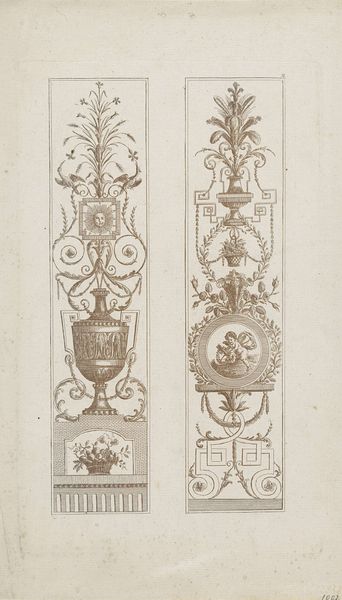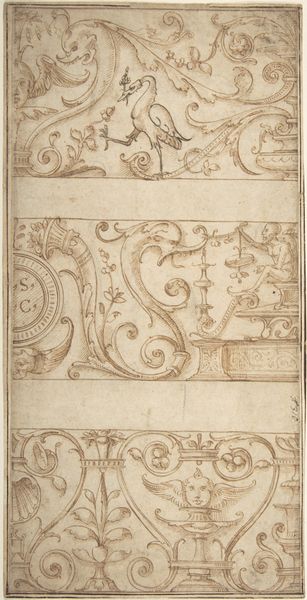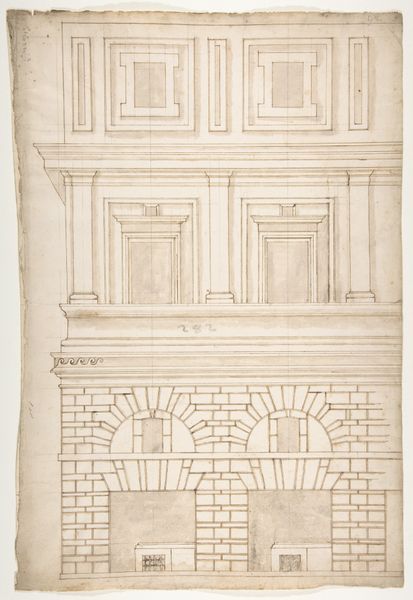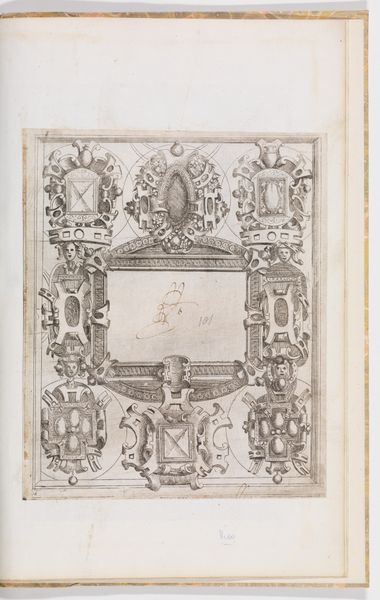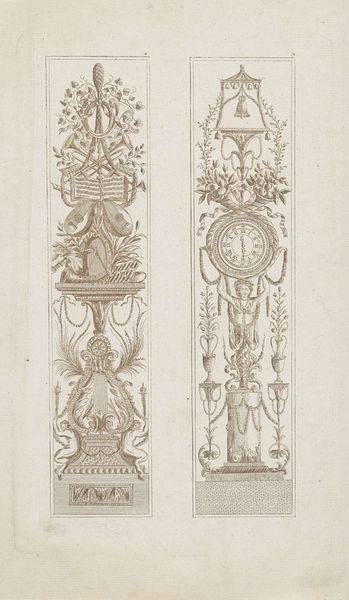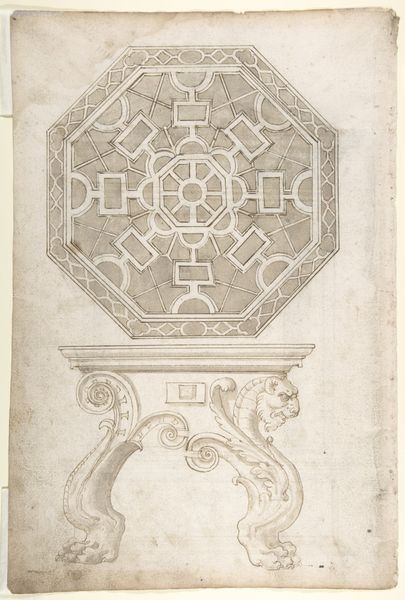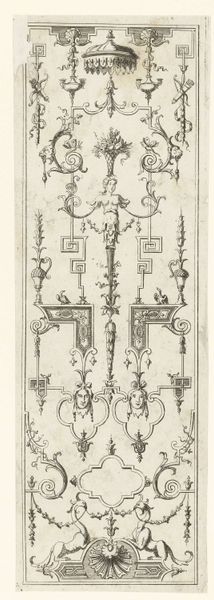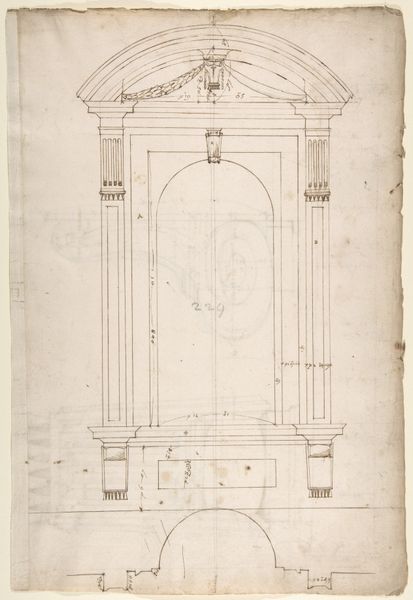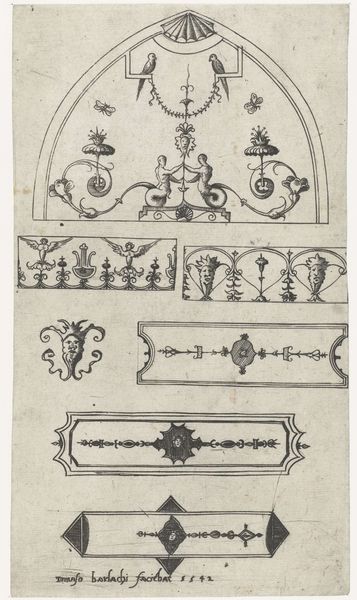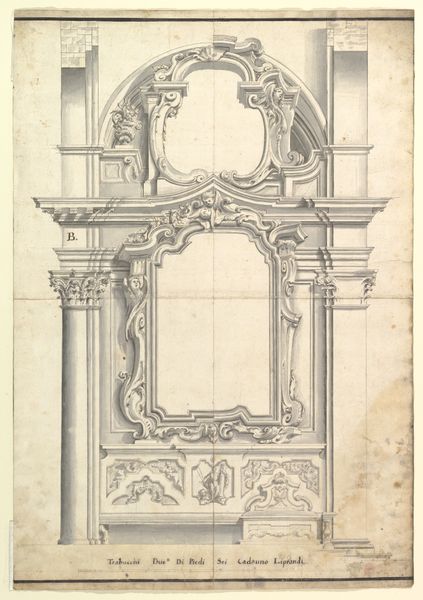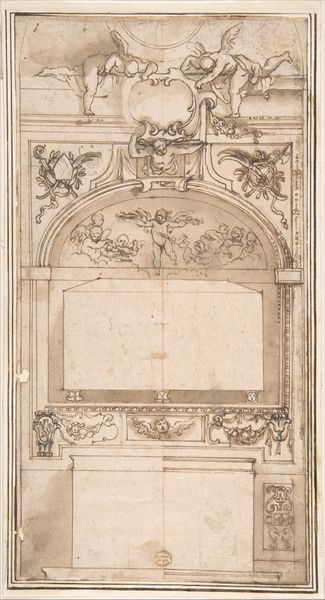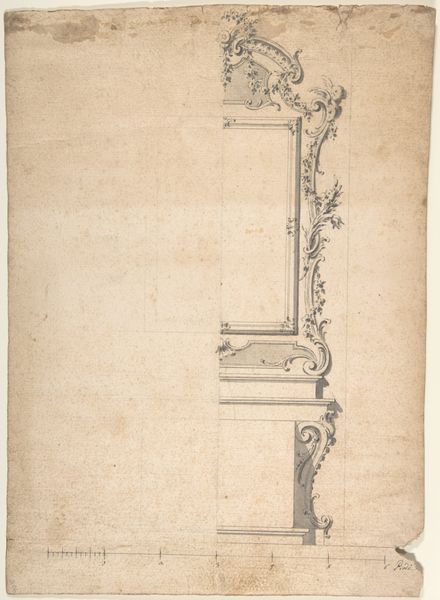
Grotesque Decoration and Ceiling Designs (Recto); Geometric Design (Verso) 16th century
0:00
0:00
drawing, print, ink, pen
#
drawing
# print
#
etching
#
11_renaissance
#
ink
#
geometric
#
pen work
#
pen
Dimensions: sheet: 16 1/16 x 10 7/8 in. (40.8 x 27.6 cm)
Copyright: Public Domain
Editor: This sheet presents "Grotesque Decoration and Ceiling Designs (Recto); Geometric Design (Verso)," made with pen, ink, and etching by an anonymous artist in the 16th century. I’m struck by the variety of patterns – they’re so meticulous and captivating! What do you make of them? Curator: It tickles my imagination, actually. Look closely. Each motif—those elaborate arabesques, the regimented ceiling patterns—they feel like echoes of Renaissance grandeur, filtered through a highly personal, almost whimsical lens. Editor: Whimsical? Curator: In a restrained way, certainly, but yes. Think about it – these aren't just designs; they are a vocabulary. An artist, perhaps longing for recognition, sketched these patterns to impress wealthy patrons, you think? Offering them new aesthetics, or maybe he had the idea for his patron to construct it with different types of materials. Perhaps, he was thinking of gold, or emerald... Or do you think that would be taking it a step too far? Editor: Definitely a stretch, but the penmanship is incredibly alluring, nonetheless. Are these kind of sketches common for the era? Curator: Absolutely! In that time, decorative arts became quite popular; these drawings functioned as pattern books or model designs for craftsmen. A lot of artists were designing them because everyone needed inspiration, but who was there to take on that creative role. Also, during the time new construction projects were becoming very common, people liked to expand or innovate within their homes. These drafts could then inspire unique ceiling paintings or even some type of furniture. Editor: It is interesting to think of it this way, as creative business proposal almost. Thanks for shedding some light! Curator: And thank you. It is exciting how a drawing of mere lines becomes something a bit more.
Comments
No comments
Be the first to comment and join the conversation on the ultimate creative platform.
